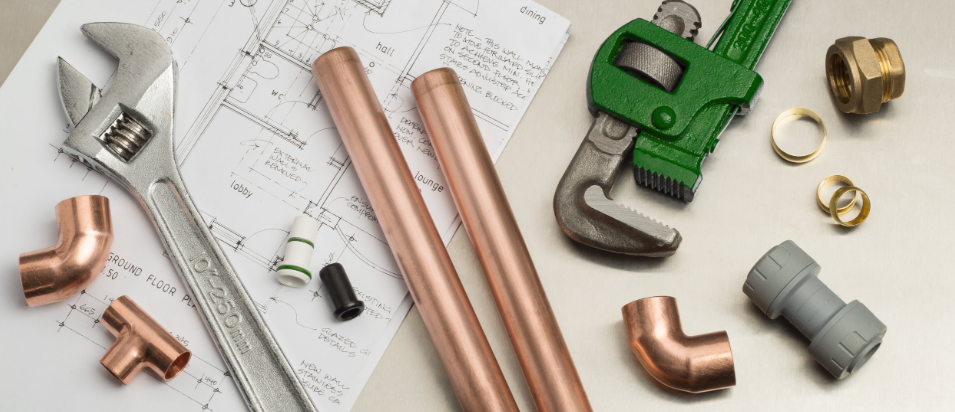
Plumbing Basics: A Beginner’s Guide to Plumbing
Plumbing is an essential aspect of any home, and understanding its basics is valuable for homeowners and DIY enthusiasts. Here’s a beginner’s guide to plumbing basics:
1. Water Supply:
- Your home receives fresh, potable water from a municipal water supply or a private well. This water is delivered to your home through a main water supply line.
2. Water Distribution:
- Inside your home, the main water supply line splits into smaller pipes that deliver water to various fixtures and appliances.
- Cold water pipes provide water to fixtures like sinks, toilets, and washing machines.
- Hot water pipes connect to a water heater and deliver heated water to fixtures like showers and faucets.
3. Plumbing Fixtures:
- Plumbing fixtures are devices that use water in your home, including sinks, toilets, showers, bathtubs, faucets, and appliances like dishwashers and washing machines.
4. Drainage System:
- Drainage pipes collect wastewater and sewage from fixtures and appliances and carry it away from your home.
- Traps, which are U-shaped pipe sections, create a water seal beneath sinks and other fixtures. This seal prevents sewer gases from entering your home while allowing wastewater to flow freely.
5. Ventilation:
- Vent pipes extend from your plumbing system to the roof of your home. They allow air to enter the drainage system, preventing siphoning and maintaining proper water flow.
- Vent pipes also help vent harmful sewer gases and odors safely above your home.
6. Drainage and Sewer Systems:
- Wastewater and sewage from your home are carried away through drainage pipes to a municipal sewer system or a septic tank.
- Regular maintenance and inspections are crucial to ensure the proper functioning of your drainage and sewer systems.
7. Water Heater:
- A water heater is responsible for heating water for various household uses, including bathing, cooking, and cleaning. It can be powered by electricity, natural gas, propane, or other energy sources.
- The type of water heater you have may affect your plumbing system, particularly the hot water distribution.
8. Shut-Off Valves:
- Shut-off valves are located throughout your plumbing system. They allow you to control the flow of water to specific fixtures or areas of your home.
- The main shut-off valve, usually located where the main water supply line enters your home, is essential for emergencies.
9. Plumbing Codes and Regulations:
- Plumbing work in your home must comply with local plumbing codes and regulations to ensure safety and sanitation.
- It’s advisable to consult with a licensed plumber or check local building codes before starting any plumbing project.
10. Maintenance: – Regular maintenance, including checking for leaks, addressing dripping faucets, and maintaining the water heater, is crucial for a properly functioning plumbing system. – Early detection of issues can prevent costly repairs and water damage.
11. Safety Precautions: – When working with plumbing, follow safety precautions, including turning off the water supply before making repairs, using appropriate tools and materials, and wearing personal protective equipment if necessary.
While this beginner’s guide provides an overview of plumbing basics, it’s essential to recognize your limitations. For complex plumbing tasks or issues, consider consulting a licensed Plumbing supply san Francisco to ensure the work is done correctly and safely.


